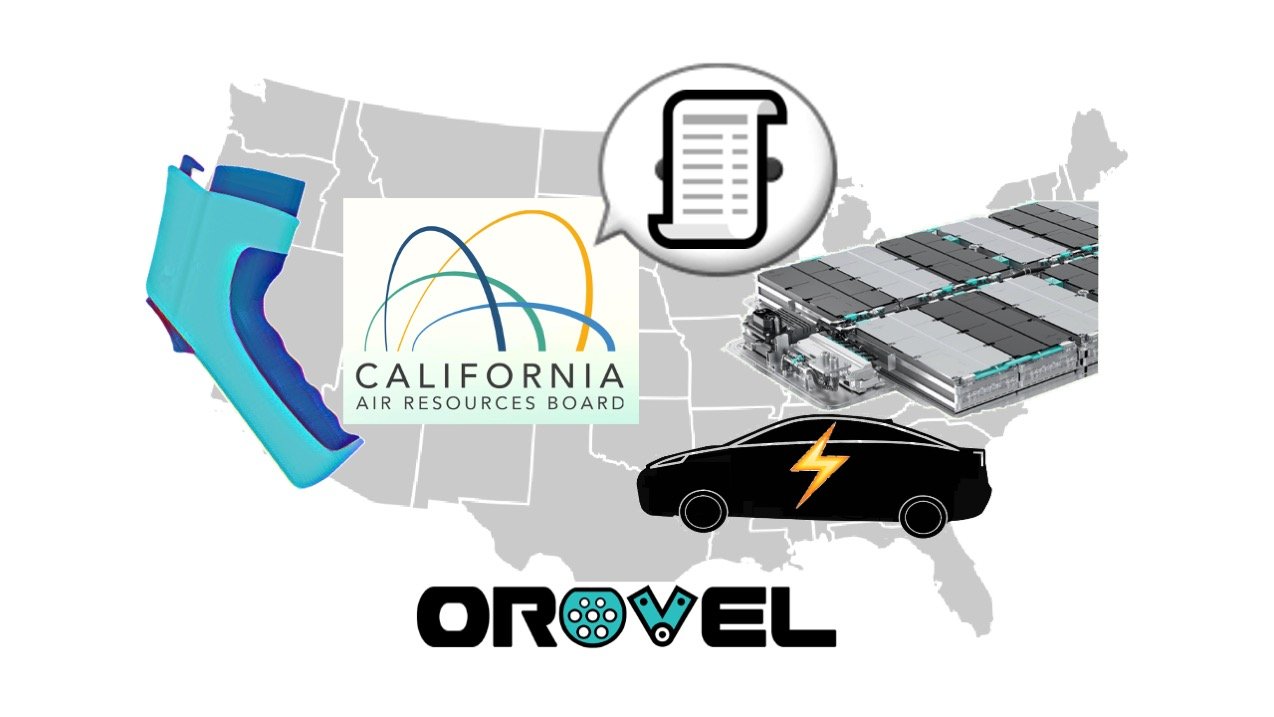2026 California Regulations for Battery Electric Vehicles
The California Air Resources Board (CARB) hold a Workshop on October 13 2021 to discuss and update the proposed regulations for Vehicle homologation, including Electric Vehicles and their Battery requirement.
This article summarises only the BEV topics including the Full Electric Vehicles and the FCEV. It also includes the Battery and Electric part of the PHEV, but does not detail the Emissions for the ICE
Internal Combustion Engines to survive IF ELECTRIFIED
CARB does not state Internal Combustion Engines to be completely banned. From 2026, OEMs should comply to a quota of ZEV and PHEV, which means that ICEs will still be allowed after 2035 but only in an electrified form. Milestones are minimum ZEV+PHEV share of 24% by 2026; 48% by 2029; 82% by 2032; 100% by 2035.
The Battery Warranty Problem
There was a very interesting debate about Battery Life and Warranty. The initial Proposal was a Battery durability of 10 years over 150,000 miles with a certified range of 80% with a certain link to state of health (SOH).
Car Manufacturers are obviously not very happy about this. They argument that Battery Technology is evolving too rapidly to keep such a long maintenance. They also fear that the range degradation is dependent on customer behaviour. Funnily, they also declare that there is a “higher uncertainty due to time rather than mileage” (slide 29). Some OEMs also stressed that low MSPR (Manufacturer’s Suggested Retail Price) could result in reduced durability. This can be interpreted as the benefit reduction for future competition would oblige some OEMs to compromise Battery durability. Consequently, OEMs are trying to reduce the requirements to only 8 years/100,000 miles warranty (70% capacity).
As a result, the updated durability requirements by CARB from 2026 should be the following:
BEV and FCEV test groups must be designed to maintain 80% of certified 2 cycle range for 10 years / 150,000 miles
In-Use Compliance and Recall regulations will oblige OEMS to collect SOH data for 30 in-use vehicles per test group
In addition, CARB wants a minimum warranty period of 8 years / 100,000 miles knowing that the Battery is considered out of warranty below 80% SOH.
PHEV minimum Range
CARB wants to impose from 2026 PHEVs to drive on pure Electric mode over a minimum distance of 30 miles. This excludes very simple hybrid systems such as stop and start to be considered as HEV if no additional benefit. Fleets will have to comply to minimum Electrification quota defined based on BEV and PHEV. A PHEV with less than 50 miles range will only partially count towards the Electrification quota (slide 36).
The case of Ferrari and other Hypercars
CARB also constrains small volume manufacturers such as Ferrari, Maserati, McLaren, etc.
Small manufacturer (defined as < 4,500 in CA annual sales) will have:
to be able to produce and deliver for sale ZEVs and PHEVs and participate in ZEV market pre-2035
By 31 December 2032, small volume OEMs must submit their 2035 compliance plan (Technology, expected volumes)
Cost Estimation
CARB also published some interesting and valuable estimations about the feasibility of their requirements for OEMs. CARB estimates the Battery cost as following:
2026: $95/kWh for BEV vs $132/kWh for PHEV
2030: $73/kWh for BEV vs $100/kWh for PHEV
2035: $56/kWh for BEV vs $80/kWh for PHEV
OROVEL comments
It is interesting to notice that California 2035 proposal, contrary to the Chinese 3035 EV Roadmap does not target any BEV efficiency in terms of electrical consumption. Nevertheless, you can deduce from several graph that the expected consumption is around 330 Wh / mi (15 kWh /100km).
Slide 75 touts that the electric cost to run an average Medium SUV is expected to be $0,08 / mi.
Slide 72 forecasts a cost of $0.24 / kWh of electricity
0.08/0.24 = 0.33 meaning 0.33 kWh / mi = 330 Wh / mi. Let remind us that China is much more ambitious on this with a max consumption of 200 Wh / mi.
References and Sources
The slides and recording of this event is available on the CARB website

